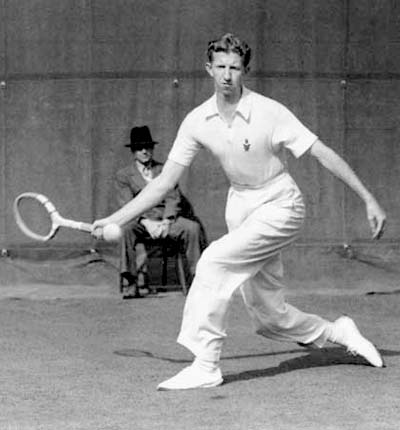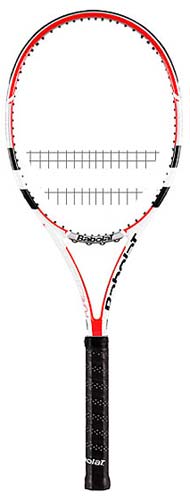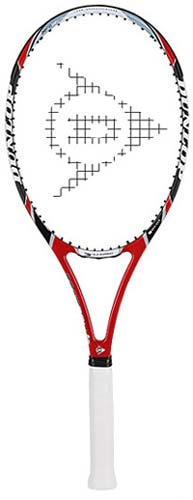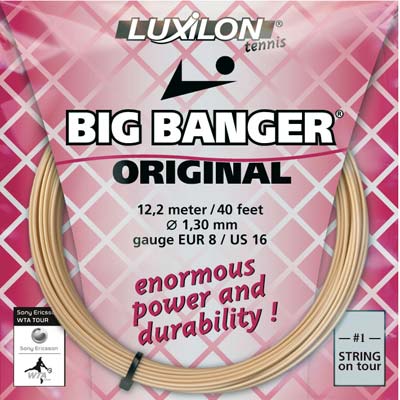|
TennisOne Lessons Racquet Technology and the Recreational PlayerDavid W. Smith, Senior Editor TennisOne There have been plenty of discussions regarding the changes made in racquet technology over the past ten or twenty years. However, if we can go back over thirty years, one could argue that, with the introduction of the over-sized Weed, followed by the far more successful Prince Classic in 1976, the first tennis racquet evolution was born. In more recent history, new tennis racquet compositions has maximized the opportunity that oversized frames first presented. More exotic composites have created more stability and more power through stiffer, lighter, and more aerodynamically designed tennis frames. Yet, as I will discuss, there is a big difference between what the pros tend to prefer and what club players choose to play with. Such a difference should be examined to determine if recreational players might actually do better with different racquets. It can be argued that such changes in racquet technology also brought about an evolutionary change in tennis strategies. For nearly one hundred years, the game was played not from a power perspective but from a strategy based on control, finesse, and point manufacturing. While there was spin in the game even early on, it was not considered a weapon (or the means to a weapon) as in today’s game. As little as ten to fifteen years ago, the professional racquet was far less potent than the professional stick of today. Sampras and even Federer used the Wilson Pro Staff, a heavy, relatively soft frame that provided little power beyond the stroke speed the player generated. Consider too, that twenty years ago, the strings preferred by pros leaned toward the lively feel of gut or a similar-playing, multi-filament synthetic. Today, players prefer less lively (or so called dead) strings that allow them to swing harder, increase spin, still land the ball inside the court. I’ll talk more about string in a bit, however, it can’t be denied that strings, quite literally, play an important role in the changing game. Grip Size When I was growing up during this dynamic period of change (I played my high school years from 1972-1976), I started playing competitive tennis using the mainstay of wood racquets: The Jack Kramer Autograph, and years later I succumbed to the oversized revolution and switched to the Prince Magnesium Pro, my first foray into bigger sized frames. Yet, what I now realize is, that not only did the size and the composition of frames change, but so to did grip sizes.
One only needs to go way back to one of the antique tennis racquets to see that those grips were huge, most around a five-inch grip! Even in my day, even average-sized players like me (I was a skinny 5’10” high school player) used a 4 5/8 inch grip. Through my last two years in college, I went to a 4 ½ inch grip. And today? I use a 4 3/8 inch grip. In talking with many of my contemporaries, this was common almost across the board. Why did so many players evolve the choice of grip size? Did it have anything to do with the changes we were seeing in racquets? Has grip size and racquet choice been part of the professional game too? Correlation When players used wood racquets, the pace of the ball being hit was not the priority for most players. It wasn’t like they were intentionally trying to hit softer than today. However, the perception of power was established and few players explored the prospect of hitting much harder than what was considered conventional at the time. Like many progressions in sport, it simply either didn’t seem possible to hit with the kind of power we see today or it just wasn’t the strategy that won matches back then. As mentioned, professionals and recreational players relied more on placement and point construction. On the backhand side, slice was king. Even the much vaunted Rocket, Rod Laver, rarely came over the ball except when forced to go for a passing shot. Tactics were everything and points usually ended with one player taking the net. A larger grip provided greater control for most players. This is because as the grips get smaller, the wrist has more play within the stroke pattern. (Note the very small grip on badminton racquets; a sport that is very wrist-intensive.) Since both the style of play and the racquet themselves did not promote power or the necessity for greater racquet head speed, a larger grip was usually the grip of choice. Powerful Frames One could conclude that as frames became lighter and more powerful, the power game naturally evolved. What used to be unthinkable was now possible.
When Roscoe Tanner hit a 128 mph serve (using his aluminum PDP frame), people took notice. It was like when Dick Fosbury flew over the high jump bar at record heights using his new-fangled backwards high jump. When it was seen as humanly possible to run a sub four-minute mile, after the Brit, Roger Bannister, did it in 1954, it seemed every long distance runner was soon able to accomplish it. So, when tennis players such as Tanner demonstrated on the serve, and women such as Seles, Capriati, and later the William sisters have shown that power in the ground game was a viable hitting strategy, the recreational players soon followed suit. Through evolutionary discovery, players started noticing they could generate faster racquet head speeds with smaller grips. The problem that soon materialized was that while many were generating much greater pace on the ball, they were exponentially losing control. However, once players discovered they could indeed hit with great velocity, they were reluctant to scale back their swing speeds. Play test For this article, we looked at two professional “Players” racquets, the new Babolat Storm Tour + and the Dunlop 300 4-D models to show where these racquets may help a player who is looking for more control and by-passing more powerful wider beam frames.
The Dunlop 300 4-D is the choice stick for Nikolay Davydenko and Tommy Robredo. Coming in at 10.9 ounces, the frame offers not quite the overall mass of some of the more heavy frames used by other pros. Like many player frames, the 300 is head light, and is a mid sized hoop of 98 square inches. The most common report by play-testers is the level of control the frame offers as well as the comfort of the frame on the arm. As with all Player’s racquets, the fact that such frames are less stiff and are heavier, means the racquet transfers more mass to the ball with less stress to the arm and less vibration. The Babolat Storm GT + is a newer racquet, just released by the popular manufacturer. Like the Dunlop 300, the Storm is a 98 square inch head and is head light. Different from the 300 is that the Storm comes in at 12.1 ounces strung. While the play testers recognized the heavier swing weight, most added that the frame doesn’t feel that heavy in competitive play and that the frame felt solid and stable and very controllable. While we would love to comment on the hundreds of other frames on the market, the idea here is to give our readers a little more intuitive information so they can better understand the differences between racquet construction and the wide variety of variables that make up the frames. Between weight, balance, length, stiffness, and head size, along with grips and string options, there are many elements beyond what just “feels good” that players will want to consider. Dinkers Ironically, the issue of more powerful racquets (granny sticks, so to speak), in my opinion, created the issuance of a negative descriptive word in the tennis vernacular: The Dinker. When players could not control these more powerful racquets and smaller grips (usually unconsciously adding more wrist to their strokes), their only recourse was to hit softer shots with shorter strokes and abbreviated follow-throughs. If a player was unable to develop optimal spin through skilled stroke formation, the more powerful racquets accented the errors that players made, much like the way a golfer who can hit 300 yards will often be in tree-trouble where the 200 yard drive ended up landing short of such trouble, and often still in the fairway. Racquet manufacturers went from marketing racquets as “Powerful” to the marketing term “Control” as their catch phrase. The push was to create racquets that provided some semblance of power while giving the player the perception of control. While such technology can certainly provide some level of control, the fact of the matter is, the more power a frame produces, the more it will accentuate the good and the bad. Pros It is interesting for recreational players to see that the vast majority of pros shy away from the very powerful racquets that are available (although, most are using racquets that are more powerful than players like Sampras used five or ten years ago). One only needs to run down a list of racquets that the pros are using and see that very few are wide-bodied, ultra-light frames that are known for power. And it makes sense: Pros develop power through their own skilled and mastered stroke patterns. They produce what I call “controlled power,” in that they don’t hit beyond their means, nor, do they hit with racquets that supplement their power. It is almost a 180-degree shift from the casual player. The club or recreational player is looking to augment his or her power; power they themselves can’t produce due to faulty of ineffective strokes. It always amazes me to watch professionals in any sport execute the power phase of their swing: Golf, Baseball players, kickers in football, etc., all seem to execute their movements in far more fluid, almost effortless fashion. In comparison, the recreational players attempt such movements with far less efficient and far more extraneous movements and the patterns look nothing like that of skilled professionals. When players swing with more refined movements, they can use heavier, less powerful racquets, and end up producing more controlled speeds in the process. Still, there has been a shift among the pros also. While they shy away from the super wide power racquets, most are using lively racquets than were seen on the tour only ten or fifteen years ago.
Strings As mentioned earlier, another technological evolution can be seen in the development of string. Thirty years ago, we had gut, and then we had various nylons, all of which seldom played near as well as gut. (But, the nylons were all cheaper and often lasted longer than gut.) Do any of you remember “Blue Star” or “Oil-impregnated Nylon”? How about the old standby “Leona 66” or even “Wire-filled nylon?” All these strings were really reaching to try and emulate the feel and playability of gut…and most failed! Then came along synthetic guts made with better composite materials, all of which started coming closer and closer to playing like the ultimate standard of the day: Genuine Gut. However, today, a new breed of strings have emerged: Polyester. When Luxilon Big Banger came on the market as well as a few other brands, all the recreational players started watching the pros use this new-fangled kind of string that reflected light funny and made a different sound when the ball was hit. Andre Agassi flat out said that Poly strings better be banned or everyone better be using it because it played so unlike any string prior…and allowed players to hit with more control, spin, and, ultimately, power. It didn’t play like gut; it played better–for the power game players. Poly allows players to swing harder without having the ball sail as was often the case with conventional strings when balls were hit hard. Indeed, players could generate more spin, not necessarily because the string created added spin through its material, but that players could swing aggressively with any spin stroke pattern without sacrificing control. Poly strings, (and now hybrid cross strings to combine both a poly response with a conventional cross string for feel), do what the less powerful racquets can do: allow players to swing faster without spraying balls all around the court. The Club Player
All this information can be disseminated for more recreational players to use in determining what racquets they can or should use. While the standard for many players is to play with what ever racquet “feels” good, this means of determining racquets can be very misleading. Players who use inferior stroke patterns may feel more comfortable or even more successful with such methods. Such false sense of success prevents players from learning and mastering more effective techniques. Similarly, racquets can provide a false sense of success. Many lighter, stiffer frames can produce significant power–and feel good in producing such pace. Yet, when the newness of such frames wears off, the player often is faced with literally dinking more and more balls because the combination of poor technique, coupled with powerful racquets offers the player no recourse other than to dink balls softly just to keep them in play. If club players would use more forgiving frames, ones a little less powerful, over time, these players might gain greater confidence in not overpowering the ball relative to their technique. If anything, players who lack skilled stroke patterns should not be using lighter, stiffer, and more powerful frames. While I wouldn’t recommend frames like those the pros are using, many club-level players would be smart in finding frames that are indeed less powerful. String Tension With larger frames, string tension has changed. However, as a person who has indeed strung well over 15,000 racquets over a 35 year period, I’ve seen the gamut of tensions; from a low of 40 pounds to a high of 72, players can choose a wide variety of tensions. Remember that within certain parameters, tighter tensions provide a level of control. This is due to the string bed not creating as much of a “trampoline” effect. This is where the compression of the string bed combines with the resiliency of the string itself, creating a rebound value that can be increased within certain string tensions. A tighter string bed will reduce the dwell time as well as the resultant angle of reflection when the ball may be hit slightly off-center. However, players who use a lot of unconventional spin often enjoy a loose string job, relying less on the string’s potential rebound power and more on the combination of the racquet moving across the ball and the degree of spin the player is producing for effect. It is common, however, to see such players literally sail balls into fences when they are faced with hitting a ball flatter. The trampoline effect is maximized on such loose tensions. Conclusion The attraction of livelier frames can lure players, especially with the aid of clever marketing. And, the initial feeling of power can be somewhat of an aphrodisiac. Small grips coupled with light frames can easily create a more wrist-intensive action on certain shots, however, the benefit pros get from playing with dead strings and the increased spin they are able to impart will most likely be lost on recreational players, if not detrimental. My suggestion to many players is to not necessarily look for the lightest, most powerful frame on the market. Instead, look for something that might be in the mid-range of both weight and power. Usually most club players who have been playing with a very light frame will find the weight of the heaviest of racquets not only uncomfortable, but it potentially may contribute to injury due to poor swing mechanics. The ideal situation is to work very methodically on strokes that can develop you as a player and in the use of racquets that are not all about power. You will be surprised, I think, in finding consistency and eventually more power because of the confidence gained in the use of racquets that are not beyond your control in terms of power. While this article is certainly not pretending to be a complete dissertation on the evolution of racquets, strings and grips–and the resulting evolution of tennis strategies as a result–it is meant to have players of all abilities recognize the differences between the various racquets now available. In addition, recognizing how grip size and string construction can play a role in how well a player will hit balls in general. It seems that over the past thirty years, the game of tennis, at the pro level at least, has turned itself inside out. From big grips, dead racquets, and lively string, to small grips, livelier racquets, and dead string, tennis has evolved more than any other sport. It is no longer the gentlemen's game played by dilettantes and aristocrats but a powerful, combative game played by some of the best athletes in the world. So, should the club player try to emulate the stuff of his favorite pro? The answer is a definite maybe. Those with the technique might want to experiment a bit and see if it works for them. Others should beware. Still, few could have envisioned this evolution thirty years ago. Where the game will be thirty years from now, well, your guess is as good as mine. Your comments are welcome. Let us know what you think about Dave Smith's article by emailing us here at TennisOne .
HIDDEN MICKEY 
If you are a fan of anything DISNEY, Dave Smith (better known as Senior Editor for TennisOne and author of two prolific tennis books TENNIS MASTERY & COACHING MASTERY), has just published an exciting and compelling novel, HIDDEN MICKEY. This Action-Adventure story centers around three friends who discover a secret journal penned by the master storyteller himself, Walt Disney. The diary hints at hidden treasure and sends the three friends on a wild cross-country search, following intriguing clue after clue and finding incredible discoveries about the great man, his life...and about themselves. For anyone who loves Disneyland or all things Disney, Hidden Mickey is a MUST READ. Limited First Edition, signed and numbered copies, available.
David has taught over 3000 players including many top national and world ranked players. He can be reached at acrpres1@email.msn.com. |




 Your comments are welcome. Let us know what you think about this article by
Your comments are welcome. Let us know what you think about this article by